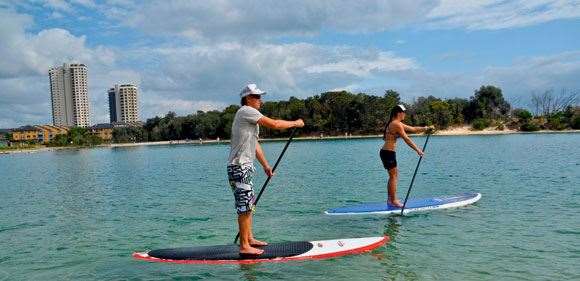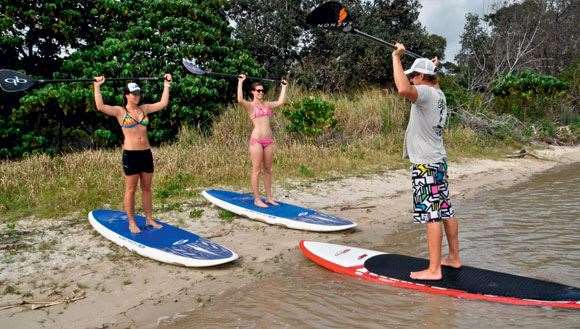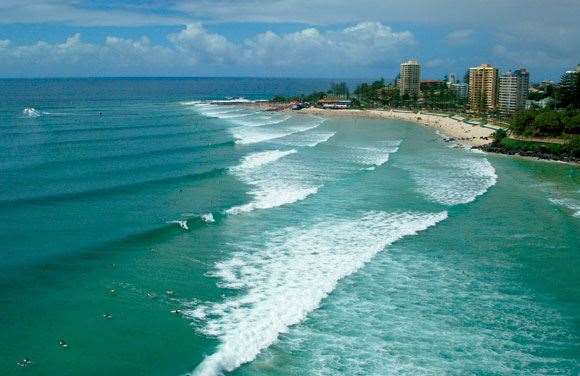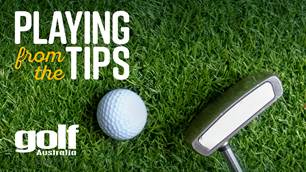Figures standing rather awkwardly in apparent attention on boards, occasionally dabbing at the water with their long paddles
 photos courtesy of Gold Coast Tourism
photos courtesy of Gold Coast TourismFigures standing rather awkwardly in apparent attention on boards, occasionally dabbing at the water with their long paddles.
A curious new sight has emerged over the last decade among the waves of coastal Australia. Cast your eyes out to sea at virtually any surf playground these days and, just beyond the thrashing hordes of boardriders hassling each other in the wave impact zone, you’re likely to see figures standing rather awkwardly in apparent attention on boards that resemble barges, without even the need for waves to propel them. They perch there looking like aquatic meerkats, occasionally dabbing at the water with their long paddles, their feet pointing parallel to the front of their craft.
Then one of two things happens.
As the wave of their choice approaches, they manage to swing these things around, then start digging furiously into the water with their paddles until the wave starts to lift them. Once up to ramming speed, the riders rest their paddles, switch to standard longboard surfer stance and start riding with often fabulous grace, using the paddles as levers as they glide through series of elegant turns and manoeuvres.
Or, alternatively, they fall off awkwardly, and let their barge wipe out a trail of grommets bravely battling through the whitewater. Woops.
Such is the enigma of the stand-up paddleboard, now commonly referred to as an SUP. This is the fastest-growing sector in the surfing world. Thousands of these massive boards are being sold each year, with the sport now taken up by a range of humanity from tots to retirees, from thrill seekers to fitness buffs, utilised everywhere from the biggest waves in the world to placid lagoons and lakes across the globe.
Amongst the traditional surfboard fraternity, they’ve become one of the most despised sights in the water. In a sporting world lamentably short on etiquette, SUP riders are known to take the cake. This is because the “right” to take a wave is deemed to go to the rider closest to the breaking part of a wave (riders who hitch a wave on their “outside” are deemed to have “dropped in”, surfing’s deadliest sin), or to the rider who gets to their feet first (the rider who attempts to catch a wave on an already standing rider’s inside is deemed a “snake”). Given that SUP riders are permanently on their feet even as they paddle for a wave, which they are capable of doing tens of metres beyond a shortboarder’s best position, they have an incredible advantage in pure wave-catching ability. If an SUP rider chooses to exercise this superiority of his craft in crowded conditions, he will ride a multitude of waves and rile a multitude of others. Verbal abuse or violent retribution invariably follows the SUP wave hog.So here I am, a longtime shortboarder, on placid Currumbin Lagoon getting my first SUP lesson. It feels seditious. This is treachery. This is going over to the dark side. This is despicable … Hey, this is cool ...
 photos courtesy of Gold Coast Tourism
photos courtesy of Gold Coast TourismI’ve been invited to the Gold Coast in peak surf season to get a taste of a transformation, in more ways than this one. Where once surfers were considered this region’s hippy, dopey fringe-dwellers, and were routinely run out of town by notorious cops bent on banging their heads together, today surfers fill the flash apartment blocks that stud the shoreline and splash out on the gourmet food in the region’s myriad sumptuous restaurants. Over a month-long stretch in late summer, the Gold Coast hosts a legion of the world’s best surfers here to compete in (firstly) the Breaka Pro at Burleigh Heads, followed two weeks later by the Quiksilver Pro at the world famous Snapper Rocks at the coast’s southernmost point at Coolangatta. The local councils and tourism authorities this year linked the two events with a surfing cultural festival, cleverly called Bleach, that featured photographic exhibitions, film nights, book signings, public debates, art shows and concerts, all populated by a plethora of the sport’s luminaries from around the world. They want you to come and see, too.And while you’re here, maybe take your first SUP lesson with renowned waterman Justin Mitchell, brother of even more renowned waterman Jamie Mitchell. These brawny blokes take on the Hawaiians at these types of watersports and regularly trounce them.
Lessons are highly advisable for first-timers, no matter what your level of surfing experience. There are simple instructions which might seem obvious, but if you don’t hear them you might well struggle. If you’re a non-surfer intent on catching waves, they should be mandatory, especially if you get the confidence to tackle a line-up. There’s a definite etiquette to follow once you venture into a crowd. Lose your craft and you could kill someone. So listen up to Justin.
Heads up, wiggle your toes ... This meerkat stance starts to make sense after a bit. From this elevation you can see clear to the bottom of the lagoon, so you can make out the fish darting around, which is very cute. You’re not craning your neck as you would lying down on a board, so there’s no hard contact or subsequent rash on your gut and no aching back. Poking along with the paddle, you soon make good speed, and a far more economical energy return than turning your arms over – the paddle is very light.
Within an hour, Justin will have you working up to “surf turns”, essential if you’re getting amongst the breakers. Switch into surfer stance, sink the back of the board up to about ankle depth, dab your paddle sideways, and you can turn them on a sixpence. It definitely takes practice – the sound of our class shrieking and kersplatting becomes our signature tune – but pretty soon we’re pretty good at that, too.
 photos courtesy of Gold Coast Tourism
photos courtesy of Gold Coast TourismWithin a few hours, you should be ready to take on some wave action. This changes the dynamic completely – it’s one thing to pilot an SUP on a millpond, quite another to handle the undulations of even a tiny swell. But the beaut thing is that a tiny swell is all it takes; because of their length (usually three to four metres) and buoyancy, they pick up the tiniest ripples. The sensation of cruising along a glassy wall of water cannot be beaten. Which is why so many older surfers are turning to stand-up – for fitness (it’s great for your “core”) and for fun.
Not that they’ll ever quite beat the intensity of surfboard riding when the waves get seriously good. If ever the desire to learn this sport hits you, here’s some advice: come to the Gold Coast to learn. Of course there are surf schools popping up all over the country, but many of these are held on city beaches, where the surf breaks squarely onto sand banks: waves are short and too often not so sweet. Up here, stretching north through a series of beachy bays from Snapper Rocks, through Rainbow Bay, through Coolangatta, all the way to Kirra, the waves unwind down a mammoth series of points, peeling sideways for hundreds of metres. The locals will hate me for saying this,but it’s the best place in the world to learn.
While we’re here, my son pushes his girlfriend Jade onto her first surfboard wave of her life. She gets to her feet with a wobble or two, but then rides this knee-high purler for the length of a football field. She is, as they say, stoked.
That’s why they refer to this place as a surfer’s paradise. (Contact Justin at www.jmsup.com)
– Graem Sims
Related Articles

Course Review: Cape Kidnappers

Playing From The Tips Ep.102: NZ PGA, Arnold Palmer, LIV Hong Kong, Blue Bay & cancelled WPGA













